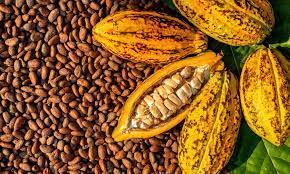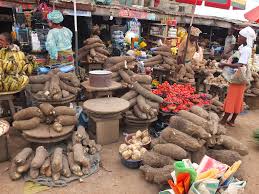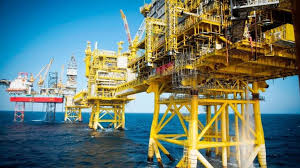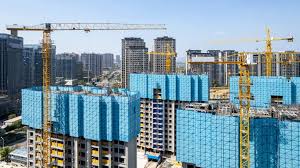In Bahia, Brazil, one of the nation’s new frontier agricultural regions suitable for extensive, high-tech farming, Schmidt Agricola is a significant agricultural corporation growing soybeans, corn, and cotton. It just recently added cocoa as a new crop to its farms.
Outside of the primary growing region in West Africa, producers of the ingredient used to make chocolate are increasing their output because farmers in countries like Brazil, Ecuador, and Colombia see potential financial gain in the harvest.
This tendency is being strengthened by the price increase to the highest level in almost 50 years, which may help ease the present supply crunch in the world market for cocoa. Because recently planted orchards, like those in South America, are more productive and lower the overall cost of production, it also threatens the livelihood of small farmers in Africa.
Since cocoa is a natural species in the Amazon region, planting it in South America counts as a form of reforestation at a time when native forests in Africa are being cleared to make room for cocoa orchards.
In Brazil, an agricultural powerhouse and the leading exporter of soy, corn, coffee, and sugar, cocoa plantations are taking over big farms in the industrialized grain belt as well as degraded pasturelands in the Amazon area.
In terms of cocoa production, the nation was formerly second only to Ivory Coast, but a deadly fungus known as Witches’ Broom in the 1980s drastically decreased output. After almost 40 years, crops are regaining their strength.
Brazil’s government estimates that production might increase from the current level of roughly 200,000 tons to 300,000 metric tons by 2025 and to 400,000 tons by 2030. This would make Brazil a regular exporter of the commodity rather than a net importer.
According to projections by the International Cocoa Organization (ICCO) and Ecuador’s exporting organization Anecacao, annual production in Ecuador will increase to between 400,000 and 430,000 tons in 2022–2023 (Oct–Sept) from 287,000 tons five years ago.
Ecuador has overtaken Ghana, which produces about 750,000 tons, to claim third place among all growers in the world. Ivory Coast is the top producer, at 2.2 million tons.
Anecacao predicts production could increase further to as much as 800,000 tons by 2030. Last July, it attracted a record number of buyers from Asia, the United States, and Europe to a trade and expo convention in Guayaquil.
LARGE-SCALE AGRICULTURE
In contrast to the meager holdings in Africa, some of the new plantings in South America appear enormous. In Ghana and Ivory Coast, the majority of farmers had 5 hectares or less.
With complete irrigation 429 hectares of cocoa have been planted by Schmidt Agricola.
One of the proprietors, Moises Schmidt, stated, “I think the new profile of cocoa production will be large-scale.
“To be more profitable, you’ll need technology and to look for bigger yields. Our primary crops will still be grains and fiber (cotton), but we anticipate that cocoa will expand in the next five years.
The new areas in Brazil’s Amazonian state of Para yield about 2,000 kg/ha of dry cocoa beans, but high-tech, irrigated areas like Schmidt’s have generated up to 3,000 kg/ha.
That is significantly greater than the Ivory Coast’s comparable to Ecuador’s average yield of 500–600 kg/ha. The one in Ghana is smaller, at about 400 kg/ha.
According to Jeroen Douglas, director of the Dutch non-profit Solidaridad, which promotes more environmentally friendly supply chains, Brazil’s market share will increase, just as it has with other agricultural products like soy and corn.
“In Brazil, there is no stopping them once the mindset is, “Yes, we want to enter into this product.” Although that mentality is not currently present, I believe we are nearing a turning point, said Douglas.
RETURN TO FARMING
Growing cocoa is reviving in the Brazilian state of Para, which is located in the Amazon.
Jose Garcia, a cocoa producer in the municipality of Medicilandia, Para state, plants cocoa on 70 hectares (172 acres) that were formerly pasture. “There are people coming back to the farms, people that left in the past to try jobs in towns,” Garcia said.
Since recent EU regulation limits the import of goods from regions that have been deforested for the purpose of establishing crops, those new orchards in the Amazon region would have an advantage on the European market.
According to Douglas, planting cocoa trees in that area of the Amazon is seen as reforestation.
He claimed that efforts are being made to enhance the Amazon canopy, including planting cocoa trees alongside other trees.
On the other hand, groups like the United Nations’ International Fund for Agricultural Development (IFAD) work to protect the market share of small farmers, especially African cocoa growers.
Alvaro Lario, the head of IFAD, stated that smallholders must increase their output, distribution, and marketing. The organization arranges training on agricultural methods to boost output per hectare.
Owing to sustainability concerns over both deforestation and child labor, a broker at a global commodities dealer, who asked not to be named due to the sensitive nature of the subject, thinks that chocolate manufacturers are willing to source more cocoa from locations other than Africa.
The trader claimed that the companies were “tired of fighting to defend their business there and are definitely considering moving some of that business elsewhere.”





















